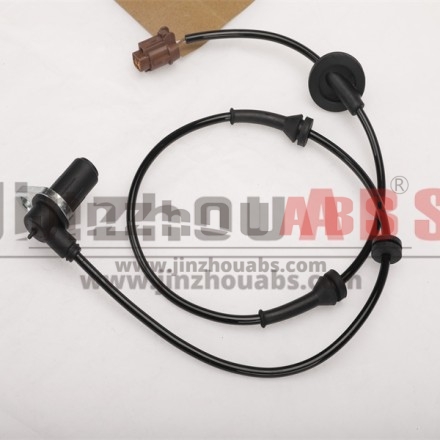Understanding the Construction and Operation of the Anti-lock Braking System (ABS)
The Anti-lock Braking System ABS is a critical safety feature in modern vehicles that prevents wheel lock-up during hard braking. By allowing drivers to maintain steering control, ABS significantly reduces the risk of accidents, particularly on slippery surfaces. This blog explores the construction and operation of ABS, focusing on its four main components.
Key Components of ABS
ABS consists of four primary components: wheel speed sensors, valves, a pump, and a controller.
Wheel Speed Sensors:
These sensors monitor the speed of each wheel, utilizing either a magnet and Hall effect sensor or a toothed wheel with an electromagnetic coil. They generate signals that indicate the acceleration or deceleration of the wheels, providing real-time data to the ABS controller.
Controller:
The ABS controller processes the signals from the wheel speed sensors to determine if a wheel is at risk of locking up. If it detects excessive deceleration, it activates the ABS, enabling quick responses to prevent loss of control.
Valves:
The valves regulate brake fluid flow. When ABS engages, the controller signals the valves to modulate brake pressure, allowing for precise control and preventing wheel lock-up by releasing and reapplying brake pressure rapidly.
Pump:
The pump restores brake pressure after the valves release it. It works automatically to maintain optimal brake fluid levels, ensuring consistent braking performance during ABS operation.
How ABS Operates
Upon braking, the wheel speed sensors detect wheel speeds. If one or more wheels start to lock, the controller activates the ABS, signaling the valves to reduce brake pressure on those wheels. This prevents skidding and allows the driver to maintain control. The system rapidly cycles through releasing and reapplying brake pressure, optimizing braking without sacrificing control.
Advantages of ABS
The introduction of ABS has greatly improved vehicle safety by:
Enhancing Control: Helps drivers maintain steering control during hard braking.
Reducing Skidding: Prevents wheel lock-up, decreasing the likelihood of accidents.
Shortening Stopping Distances: In certain conditions, ABS can achieve shorter stopping distances compared to traditional brakes.
Conclusion
The Anti-lock Braking System is an essential safety feature that enhances control and stability during braking. Understanding its components and operation highlights the advanced technology that contributes to safer driving experiences. As automotive technology continues to evolve, ABS will likely see further improvements, ensuring even greater safety on the road.





